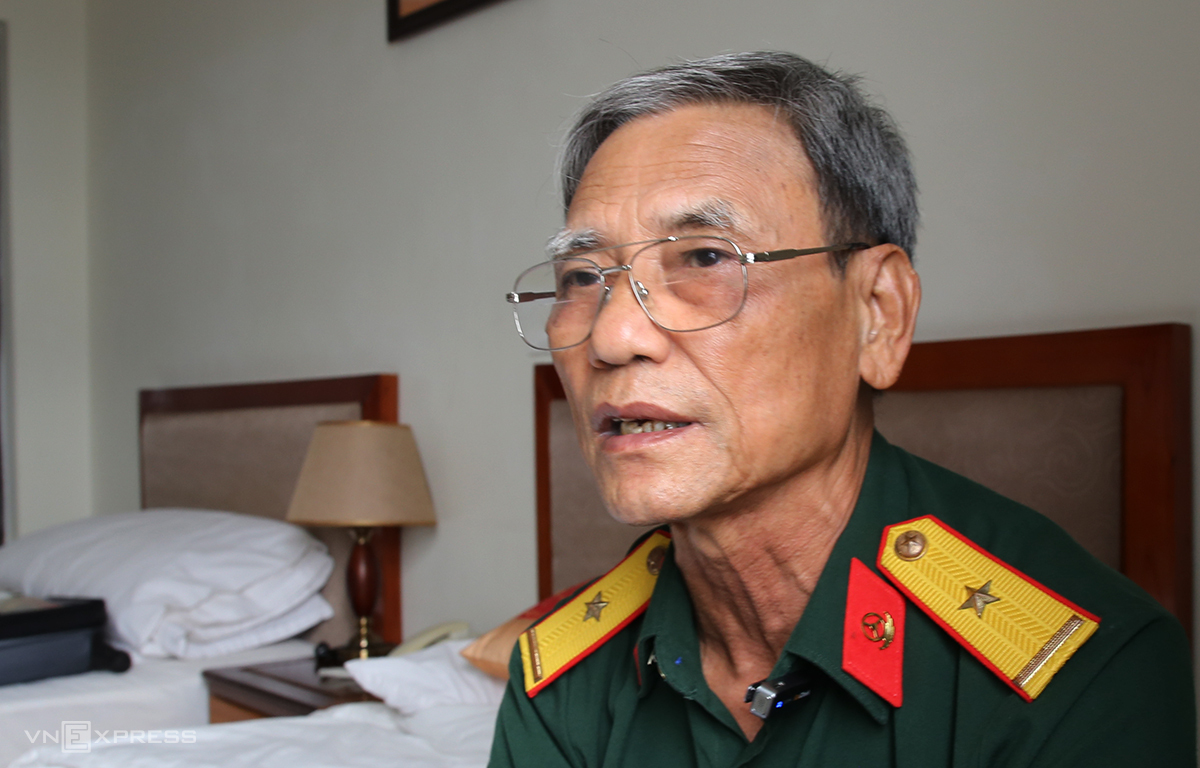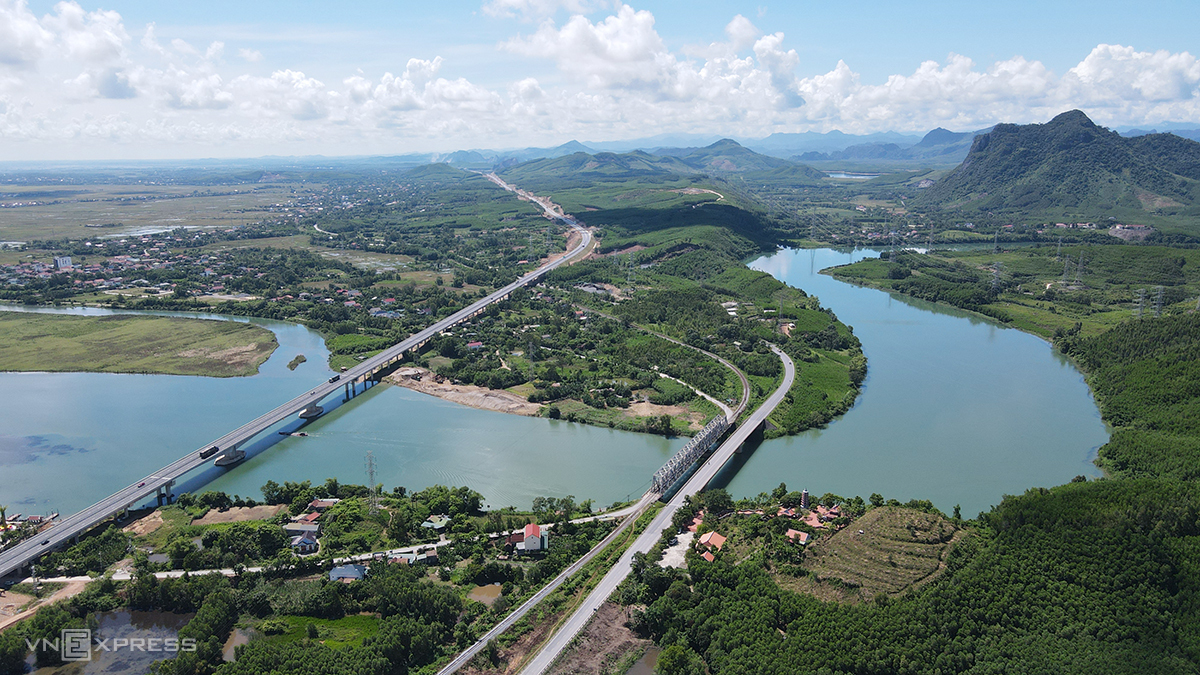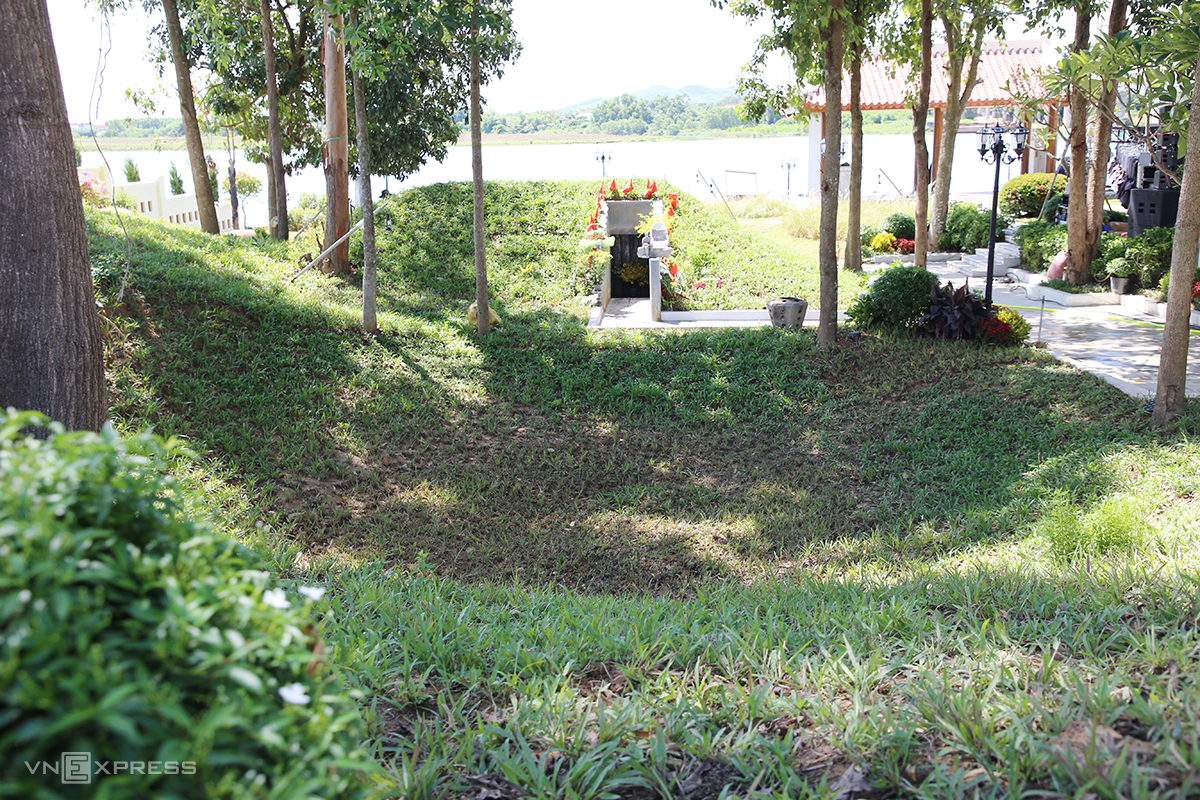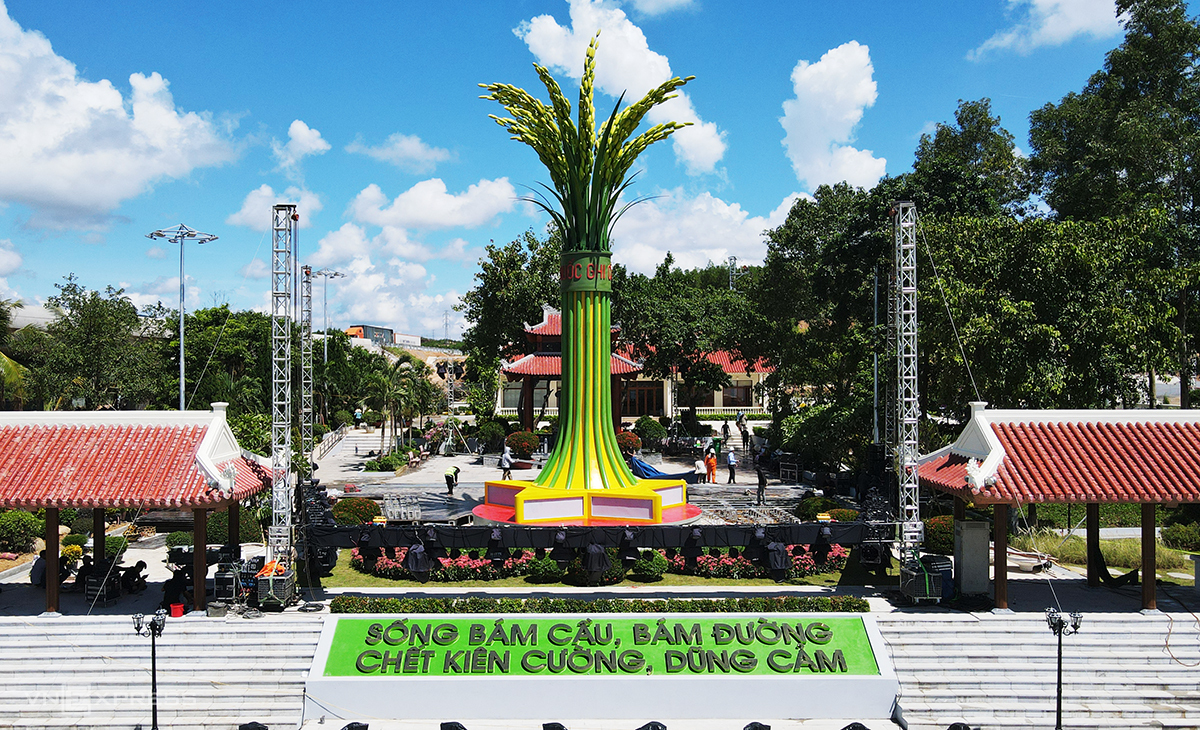On 19/9, the Quang Tri People's Committee inaugurated a renovated memorial dedicated to 16 young volunteers who died at Long Dai 2 ferry crossing in Truong Ninh commune. The 20 billion VND project, funded by social contributions, features a striking monument: 16 sixteen-meter-tall stalks of rice rising from a star-shaped base, symbolizing the volunteers from Thai Binh province who lost their lives.
Vu The Huyen, 71, a former member of the C130 Company, 2nd Battalion, 571st Division, and 559th Regiment, attended the inauguration. He carefully scanned the names on the memorial, pausing at Bui Nang Dac's. "That should have been my name, not Dac's," he said. "We swapped tasks that day, and that's why I survived." Dac, 22, died alongside his 19-year-old fiancee, Ngo Thi Dong.
 |
Vu The Huyen. Photo: Dac Thanh |
Vu The Huyen. Photo: Dac Thanh
In April 1971, at just 17, Huyen joined 134 other young people from Kien Xuong district, the former Thai Binh province (now Hung Yen province), as part of the C130 Company. Their mission was to keep the Ho Chi Minh Trail open, the vital supply line from north to south Vietnam, during the escalating American bombing campaign.
The C130 Company worked on various roads in the former western Quang Binh province. Their daily tasks included clearing rocks, filling bomb craters, rescuing supplies, removing cluster bombs, and clearing paths for vehicles. They also built A-frame shelters in the forest for troops and civilians during air raids.
In late 1971 and early 1972, the company worked on Route 10 to alleviate pressure on the Ho Chi Minh Trail. To disrupt this new route, the Americans deployed sensors, called “tropical trees,” which could detect people, weapons, and vehicles through vibrations, magnetic fields, and sounds. If these sensors were found, it meant the area was compromised, and the company had to relocate.
Vu The Huyen recounts the bombing that killed 16 young volunteers 53 years ago. Video: Dac Thanh
When Route 10 was discovered, Huyen's company was reassigned in late July 1972 to the Long Dai 2 ferry crossing, about one kilometer downstream from Long Dai 1. This area was a prime target, enduring hundreds of tons of bombs. American reconnaissance planes constantly patrolled the skies, AD4 aircraft strafed the area, and DA6, F-111, and B-52 bombers relentlessly dropped their payload. Offshore, the US 7th Fleet bombarded the area day and night.
A 57 mm anti-aircraft gun was stationed at Long Dai 2, but its limited range was ineffective against the high-flying American planes. Despite harsh conditions, diseases like scabies, ringworm, and malaria, the young volunteers remained resolute, committed to their motto: "Live clinging to bridges, clinging to roads - Die steadfast, courageous."
 |
Long Dai 1 and 2 ferry crossings are now bridges on National Highway 15, the railway, and the north-south expressway. Photo: Dac Thanh |
Long Dai 1 and 2 ferry crossings are now bridges on National Highway 15, the railway, and the north-south expressway. Photo: Dac Thanh
On the morning of 19/9/1972, Huyen and 14 others were tasked with ferrying stones across the Long Dai River. Bui Nang Dac was assigned to cut wood for A-frame shelters. Because Dac was suffering from painful sores, they swapped tasks.
After 2 PM, 12 people were on the riverbank, and three were on a boat transporting stones when an American reconnaissance plane spotted them and marked the Long Dai 2 ferry crossing with smoke. The 12 people on shore rushed to two nearby shelters—one made of concrete piles, the other of wood, about 20 meters apart.
Hearing the explosions from over a kilometer away, Huyen rushed to the scene. The bomb had hit between the two shelters, collapsing both and felling surrounding trees. "I saw Xuyen near the entrance, still breathing, her head covered in blood, but trapped. She died a minute later. 12 people died inside the shelters from the blast, and the three in the river were killed, their bodies mangled. We spent days recovering the remains for burial," Huyen recalled.
 |
The bomb crater and shelter where the young volunteers died 53 years ago have been reconstructed. Photo: Dac Thanh |
The bomb crater and shelter where the young volunteers died 53 years ago have been reconstructed. Photo: Dac Thanh
Four days later, another American bombing raid killed Tran Manh Ha. In total, the C130 Company lost 16 members–7 women and 9 men–in the two attacks. Fifteen were returned to their hometowns for burial, and one was buried in the commune cemetery. Despite the immense loss, the company continued its mission until the Paris Peace Accords were signed on 27/1/1973. Huyen returned home late in 1972 to recover from malaria.
Nguyen Van Phung, 84, a soldier stationed at Long Dai 1 and 2, recalls the ferry crossings' vital role during the American bombing campaign. Long Dai 2 was established to handle the overflow from Long Dai 1, which was often congested or targeted by bombs. "Long Dai 2 also served as a decoy, drawing enemy reconnaissance and diverting bombs away from Long Dai 1," Phung explained.
Both ferries were disassembled and hidden during the day, then reassembled at night for vehicles to cross. Often, enemy flares and reconnaissance planes prevented crossings, leading to supply backups. As soon as the bombing stopped, the soldiers and volunteers would rush to reassemble the ferries and get the supplies moving.
 |
The memorial to the 16 young volunteers who died at Long Dai 2 is designed in the shape of 16 rice stalks. Photo: Dac Thanh |
The memorial to the 16 young volunteers who died at Long Dai 2 is designed in the shape of 16 rice stalks. Photo: Dac Thanh
A memorial was first built in 2012 with social funding to honor the 16 volunteers of the C130 Company. In 10/2016, Long Dai 2 was recognized as a provincial historical site and later as a national historical site. Over time, parts of the memorial deteriorated, and its scale no longer reflected the significance of the site. In late 4/2025, the former Quang Binh province began renovations.
Dac Thanh












